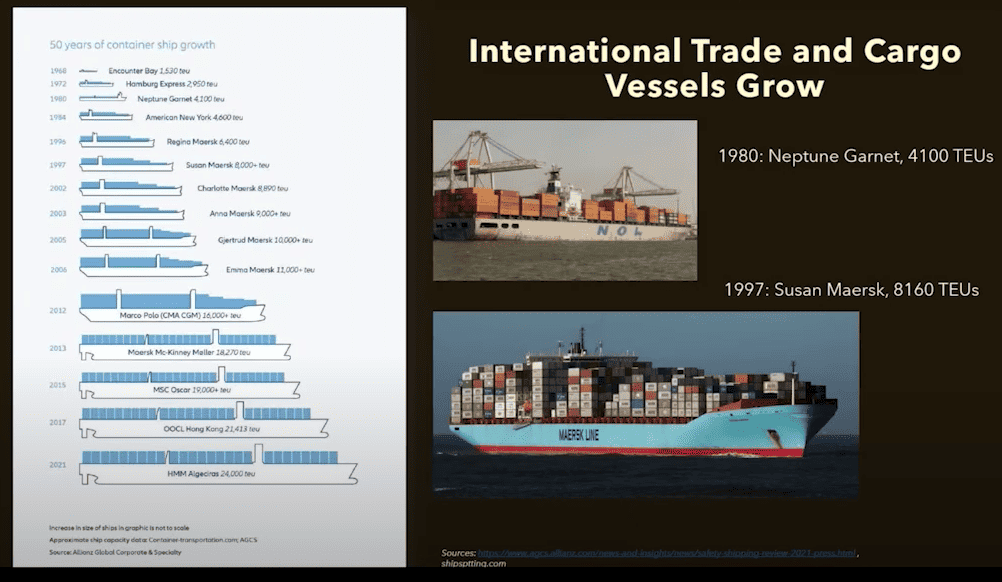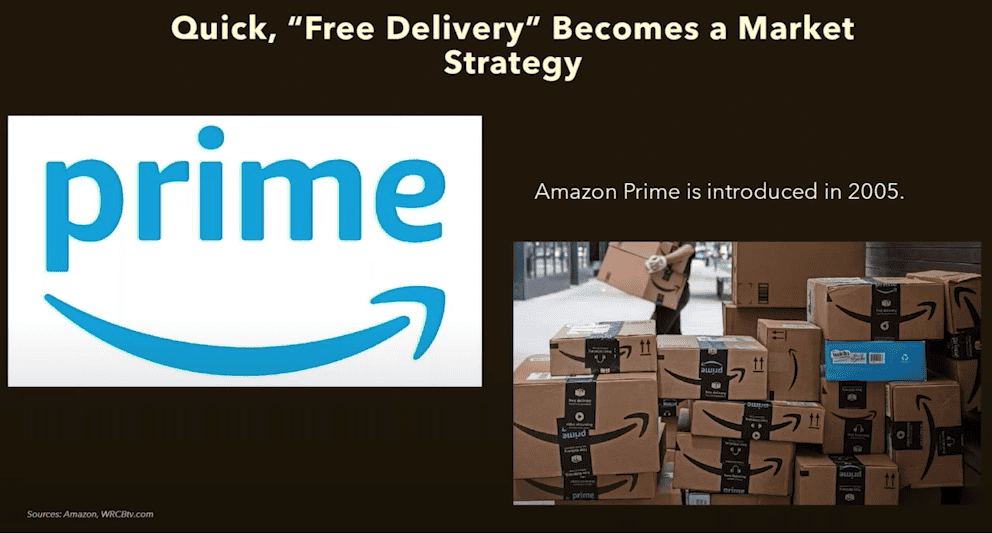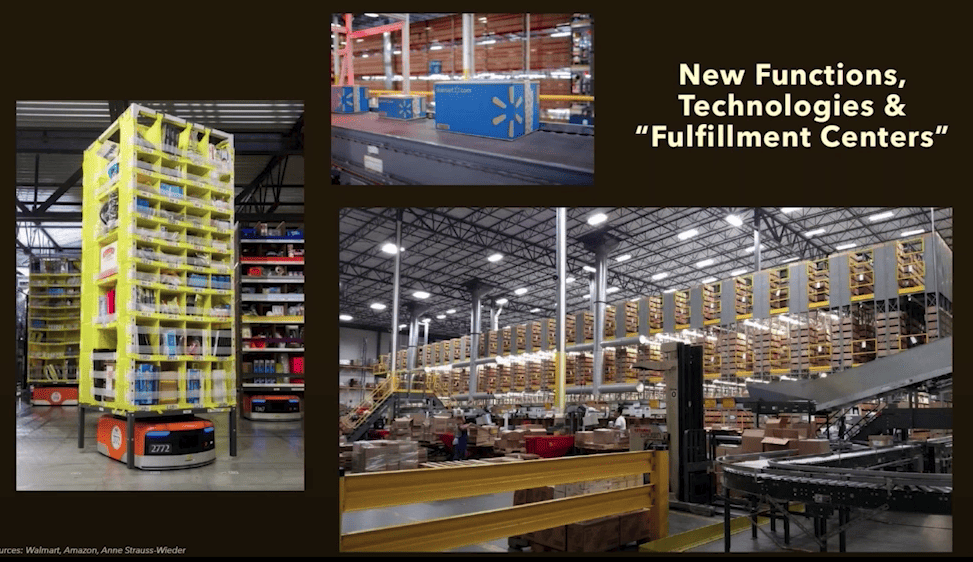We watched Anne Strauss-Weider’s presentation at the Transportation Research Board 2022 Annual Meeting titled “Evolving with Rapidly Shifting Supply Chains and Freight Systems: The Past, the Present, and the Emerging Future.” Anne so seamlessly connects the dots on how freight has evolved over time, and we have summarized it for your digestion.
Anne is the Director of Freight Planning at the North Jersey Transportation Planning Authority. She has 40+ years of experience in both the private and public sectors, and is recognized in the transportation community for her contributions to freight mobility, resilience and business continuity, and “freight as a good neighbor” effective practices. She also teaches a graduate course on freight and public policy at Rutgers University.
1. The 3 Layers of the Freight System
- Physical movement of goods: vessels, aircraft, trucks, railways, and industrial buildings.
- Flow of information: digital means and paperwork necessary for facilitating the movement of goods.
- Government rules and regulations: establishes the framework for the movement of goods.
2. BIG shifts happened in the ’70s and ’80s
- GM, Form, GE, and IBM held significant production dominance, while companies like Kmart and Sears were the go-to choices for consumers.
- But then…Walmart, Costco, Staples, and Home Depot, etc. burst onto the scene…each catering to specific market segments and offering discounted prices, bulk quantities, unique experiences (QVC), etc.
- Tech companies like Apple emerged and the personal computer was introduced by IBM in 1981.

3. Lean + Just-in-Time
- Simultaneously, lean management and just-in-time inventory gained popularity, influenced by Japanese manufacturing practices.
- This changed freight – and emphasized the need for efficiency.
4. Intermodal, containerized, and global
- Malcolm McLean revolutionized freight by pioneering containerization.
- We started stacking containers on railcars, and the first land bridge services were established.
- Investment focused on completing the interstate highway network.
- Global changes, like the fall of the Berlin Wall and the formation of the European Union, fostered international trade and exchange of ideas.
5. The Internet + Amazon
- The internet revolutionized the retail landscape in 1994 with the establishment of Amazon, while traditional stores like Woolworth struggled to keep up.
- International trade thrived, leading to larger container vessels that reduced costs per container.
- Warehouses transformed into distribution centers, adding value to products as they moved through the supply chain — and they saw widespread adoption of barcode scanning and conveyor systems.

6. September 11th
- Transportation equipment used as weapons led to increased security measures.
- Establishment of organizations like CTPAT and CSI to combat terrorism.
- Advancements in collaboration, communication, and coordination within the industry.
- Drove advancements in inventory visibility and resilience to address challenges like natural disasters and other disruptions.
7. Amazon Prime launches in 2005
- Walmart became the largest corporation.
- Amazon introduced Prime and set new standards for free delivery.
- Brick-and-mortar stores faced challenges, leading to closures.
- Infrastructure adjustments were made to accommodate the growth of international trade, including raising bridges, deepening channels, and introducing larger container vessels.

8. Delivery Services & Automation
- Distribution centers embraced advanced technologies, such as Amazon’s Kiva robots, to optimize order fulfillment processes.
- Distribution centers become fulfillment centers focused on efficiently processing customer orders.
- Amazon expanded its services to include air and trucking transportation.
- Introduction of last-mile delivery services like Instacart and Uber Eats.
- Technological innovations like automated trucks, drones, and sidewalk robots.

9. Sustainability & Efficiency
- Implementation of practices like solar panels, recycling, and electric or compressed natural gas (CNG) for trucking.
- Companies like Amazon, FedEx, and UPS have introduced electric trucks for home delivery services.
- Innovations like blockchain technology enhanced accountability and swift recalls in food supply chains.
- Load matching platforms contribute to reducing empty trips and increasing truckers’ revenue.
- The integration of information and physical movement continues to drive efficiency and visibility in the freight industry.
10. Challenges and adaptability
- International trade unravels due to events like China’s Belt and Road Initiative, Brexit, bankruptcies of major container lines, and the introduction of tariffs.
- The global pandemic further highlights the complexities of global supply chains and logistics, leading to disruptions in production and an increased demand for essential goods.
- Freight shows resilience and adaptability, with e-commerce experiencing significant growth and individuals finding new solutions to keep goods moving and meet changing demands.
Strauss-Weider’s presentation highlights just how much our freight systems and supply chains have evolved and changed over the past decades. The freight industry has constantly adapted to meet changing demands — such as from the transformative impacts of technological advancements and global shift — to market disruptors like Amazon. Despite challenges posed by events like September 11th and the global pandemic, the industry has demonstrated resilience and adaptability, embracing sustainability, efficiency, and innovative solutions to ensure the smooth movement of goods.
